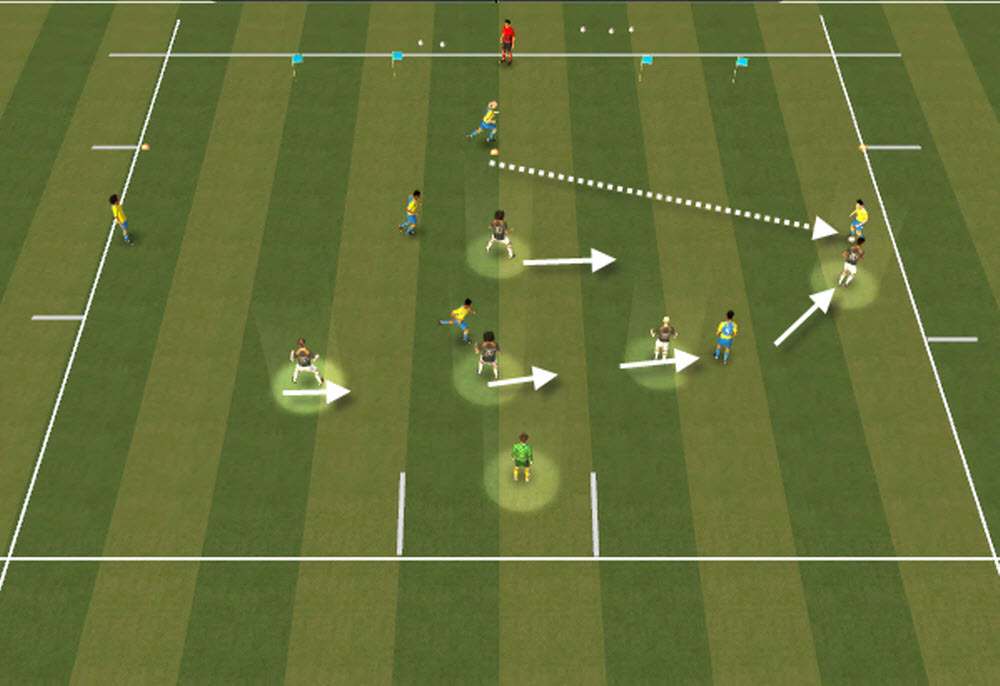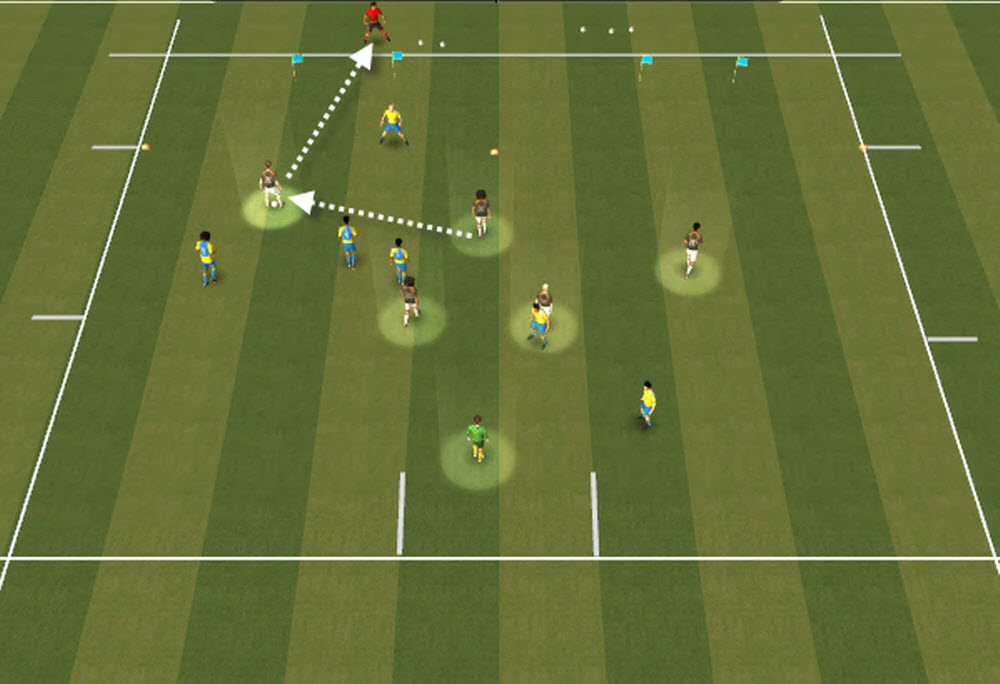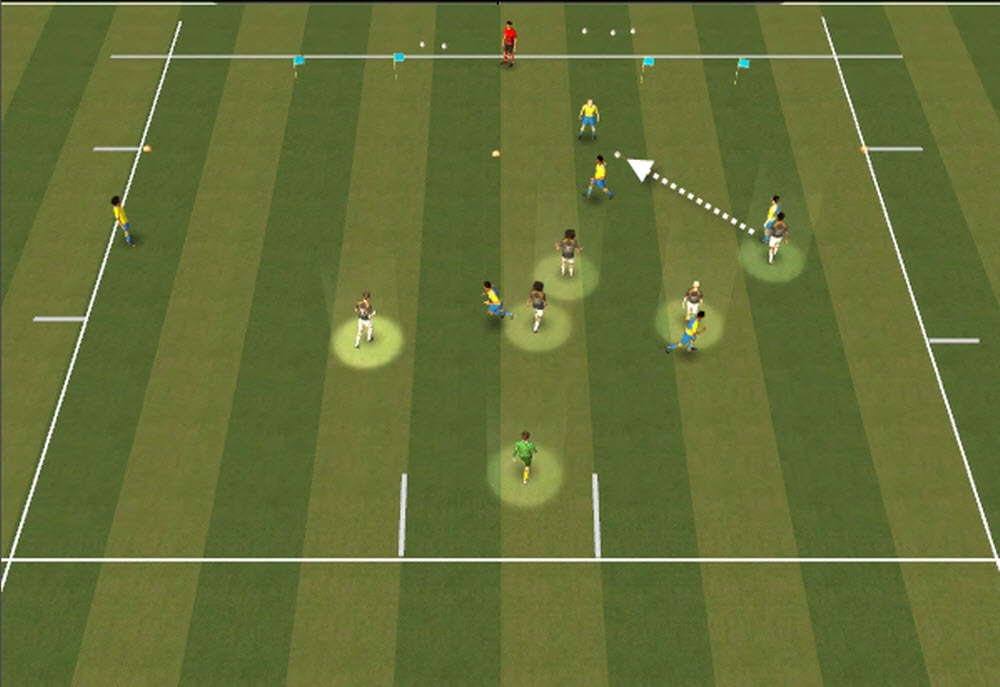17 Apr 2016
Defending – Improve defensive organisation
Defending. In this functional practice, we are looking at how the defensive unit in a functional game, get organised, work together as unit and keep their compactness and defensive shape.
The nature of the defending functional game means that there will be lots of attack v defence situations created, which will give the defending team lots of opportunities to work on, practice and improve their defensive organisation and compactness.
Organisation
- Suggested pitch size is full width to 10 – 20 yards over the halfway line
- Full sized goal with GK
- Play a suggested defensive team of 2 centre halves, 2 fullbacks and a holding M/F players against an attacking team of 2 central forwards, 2 wide players and an attacking midfield player – Attack v Defence 5 v 5. This can be scaled up to two attacking midfield players v two defending midfield players, then progressed to two attacking fullbacks joining in and two defending wide players.
- There is also a conditioned attacking support player, who joins in the attacks, but can only support behind the ball and can’t shoot.
- Target / server player, with a supply of footballs
- 2 x target goals for the defence to break out and try and score in
Structure
- Ball is served from the target / server player to the conditioned attacking support player, who then looks to pass forward to one of the attacking team.
- Attacking team try and score, defending team try and stop them.
- Attacking team can always pass back to the conditioned attacking support player, who can only support behind the ball.
- If the ball goes out of play – attack is started from where the ball went out or from the target / server player to the conditioned attacking support player, who then looks to pass forward to one of the attacking team.
- If defending team win the ball, they can score by passing the ball through either of the target goals to the target player.
- Normal football rules apply. Offsides. Throw ins. Free kicks
Key Coaching
- Defensive team to adopt and keep a compact, central and organised shape
- Defensive players to take positions in relation to where the ball and the goal is
- As the ball moves, the defensive unit move together, like they are linked together by a piece of elastic – including the GK
- Central midfield player takes positions between the ball and their central defenders to shield the central ball into forwards feet
- Good communication between defensive players
- If the ball goes wide, the nearest fullback presses the ball and the rest of the defensive unit slide over and keep their compactness.
- If a centre half presses or challenges for the ball, the other centre half and fullbacks, drop and cover
- If the ball goes sideways or backwards from the attacking team ,the defensive unit compact play forward as the ball travels and hold and drop if there is a chance the ball could be passed forward
- Be careful the team do not over compact and end up too narrow.
- If at any time the defending team can win or intercept the ball safely, then they should do so and look to counter attack
Progressions and challenges
- If the defenders win the ball, they can score by passing through the target goals to the target player.
- The target player immediately passes the ball back to the to the conditioned attacking support player, who then looks to pass forward to one of the attacking team.
- Play attack v defence for agreed period of time, keep scores of goals scored by both teams.
- Rotate teams so that all players have the opportunity to attack and defend
- Bring in a second goal and play a game



